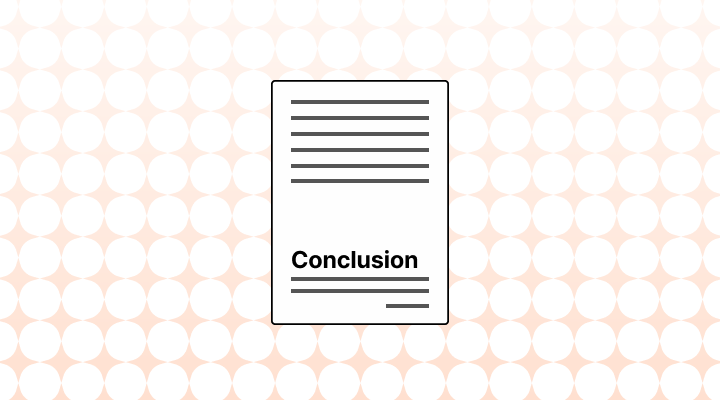How to write a conclusion? Writing a great conclusion paragraph is like putting the final piece into a complex puzzle.
It's your last opportunity to leave a lasting impression on your readers and tie together all the threads of your research essay. In this blog post, we'll explore the art of crafting a remarkable conclusion that not only summarizes your findings but also leaves your audience with a sense of closure and a memorable takeaway.
Steps to Success
- Restate Your Thesis
- Summarize Your Key Findings
- Provide Answers
- Reflect on the Significance
- Address Limitations
- Offer Practical Implications
- Emphasize the Takeaway Message
- Maintain Consistency in Tone
- Keep it Concise
- Revise and Proofread
- Seek Feedback
Word of advice
Steer clear of commencing your conclusion using expressions such as "In conclusion" or "To conclude," as this can appear overly evident and potentially diminish the sophistication of your writing. Instead, ensure that the content and positioning of your conclusion naturally convey its purpose, eliminating the necessity for further guideposts.
1. Restate Your Thesis and the Problem
Revisit your thesis statement from the introduction and restate it in a slightly different way. Your thesis is the backbone of your research, and reaffirming it in the conclusion helps reinforce the central message of your paper.
Example
Original thesis statement
Advancements in artificial intelligence have the potential to revolutionize healthcare, enhancing patient diagnosis, treatment, and overall medical outcomes.
Thesis statement in the conclusion
The potential for a transformation in healthcare, including improved patient diagnosis, treatment, and overall medical outcomes, lies within the progress of artificial intelligence.
2. Summarize Your Key Findings
The primary function of your conclusion is to summarize the key findings and arguments presented in your research paper. Concisely restate the main points without delving into excessive detail. Use clear and straightforward language to ensure that your audience grasps the core of your work.
3. Provide Answers
If your research paper posed specific questions or hypotheses at the beginning, use the conclusion to provide answers or insights derived from your research. Explain how your findings address the initial questions and what implications they carry.
4. Reflect on the Significance
Discuss the significance of your research within the broader context of your field. Explain how your work contributes to existing knowledge and why it matters. Highlight any innovative or novel aspects of your research that could impact future studies or practical applications.
5. Address Limitations
Acknowledge any limitations or constraints that your research encountered. Every study has its boundaries, and it's important to be transparent about them. Discuss how these limitations may have affected your results and suggest areas for future research that can address these limitations.
6. Offer Practical Implications
If your research has real-world applications, discuss them in the conclusion. How can your findings be applied in practical situations? Offer insights into potential solutions or actions that can be taken based on your research.
7. Emphasize the Takeaway Message
End your conclusion with a strong, thought-provoking statement or a call to action. Encourage your readers to reflect on the broader implications of your research and its relevance to their lives or the academic community.
Helpful tips
Maintain Consistency in Tone
Ensure that the tone and style of your conclusion align with the rest of your paper. The conclusion should feel like a natural extension of your research, not a separate entity. Maintain a professional and scholarly tone throughout.
Keep it Concise
While it's important to cover all the essential elements in your conclusion, keep it concise. Avoid introducing new information or going into excessive detail. Stick to the main points and maintain clarity.
Revise and Proofread
Just like any other part of your research paper, your conclusion should be thoroughly revised and proofread. Check for grammatical errors, spelling mistakes, and ensure that your writing is clear and precise.
Use our Engram proofreader and paraphraser to help with the revision of your paper. This way, you can ensure that your paper will not suffer from any grammatical errors and syntax problems.

Seek Feedback
Consider seeking feedback from peers, mentors, or professors. A fresh perspective can help you refine your conclusion and ensure that it effectively communicates your research's significance.
In conclusion (pun intended), writing a great conclusion for your research paper is a skill that requires careful consideration and attention to detail. A well-crafted conclusion not only summarizes your work but also leaves a lasting impact on your readers. By following these steps and approaching your conclusion with thoughtfulness and clarity, you can create a conclusion that elevates your research paper and leaves a strong impression on your audience.
Discover more about the AI English proofreader, Engram!













